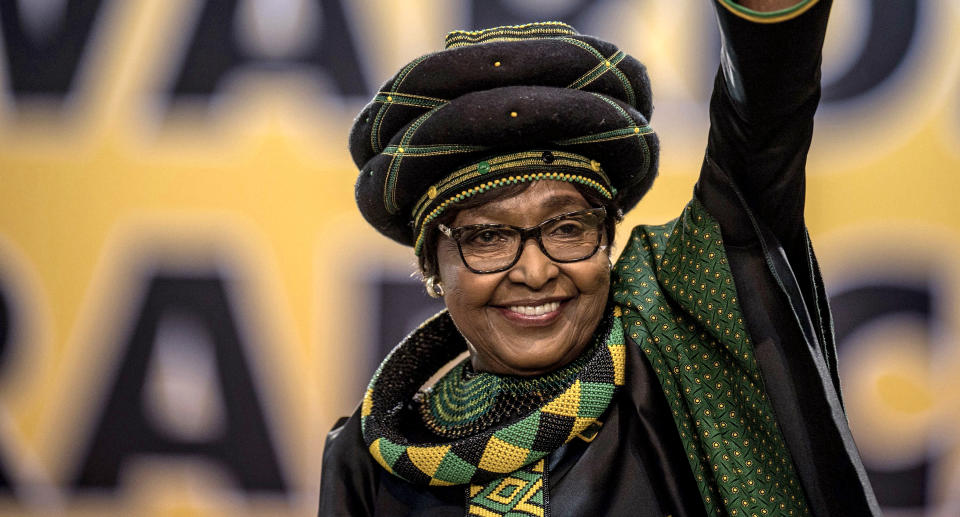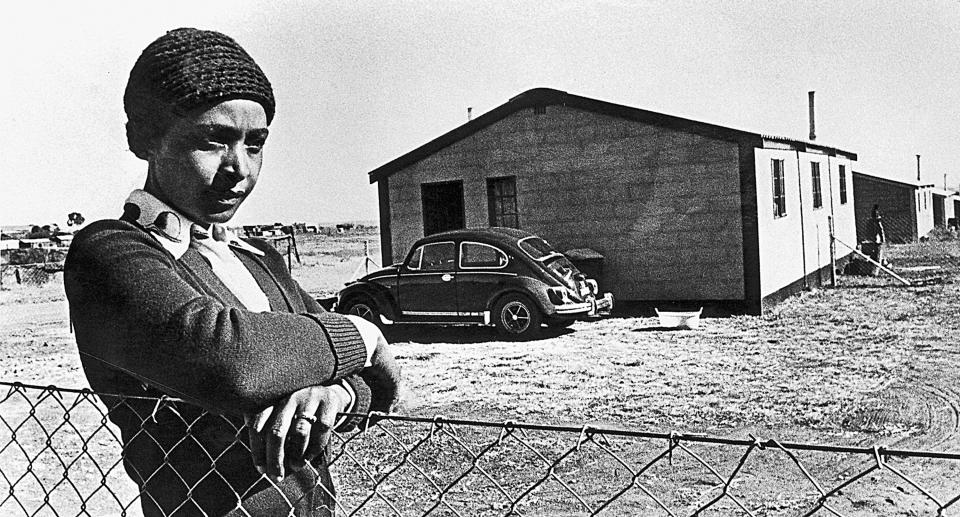6 things to know about the late Winnie Mandela, 'Mother of the Nation'

Winnie Mandela, the former first lady of South Africa and wife of Nelson Mandela, passed away at age 81.
She died at Netcare Milpark Hospital in Johannesburg, South Africa after an unnamed illness, although various outlets reported that she suffered from kidney problems. “Mrs. Madikizela-Mandela was one of the greatest icons of the struggle against apartheid,” Winnie’s family told CNN in a statement. “She fought valiantly against the apartheid state and sacrificed her life for the freedom of the country.”

The statement continued, “She kept the memory of her imprisoned husband Nelson Mandela alive during his years on Robben Island and helped give the struggle for justice in South Africa one its most recognizable faces.”
The activist and mother-of-two was the wife of Nelson for 38 years, 17 of which he was imprisoned for conspiracy to overthrow the apartheid government for its racist policies. She also served as South Africa’s first lady when Nelson was elected president in 1994 although by then the couple’s marriage was in trouble.

Winnie was both beloved and condemned for her politics, which included her arrest, torture, and imprisonment while fighting for civil rights and claims that she orchestrated the kidnap and murder of those who didn’t follow her orders.
Here are six other things to know about Winnie Mandela, “Mother of the Nation.”
Her marriage was lonely. Winnie Madikizela met Nelson Mandela while working as South Africa’s first black lawyer at age 22. According to the Guardian, Winnie was standing at a bus stop in the town of Soweto when Nelson — then married — spotted her and asked her to lunch.
The couple’s first date was unconventional, to say the least. “The next day I got a phone call,” Winnie said, according to Newsweek. “I would be picked up after work. Nelson, a fitness fanatic, was there in the car in gym attire. I was taken to the gym, to watch him sweat! That became the pattern of my life. One moment, I was watching him. Then he would dash off to meetings, with just time to drop me off at the hostel. Even at that stage, life with him was a life without him.”
After Nelson divorced his wife, according to the Washington Post, he proposed to Winnie by telling her to get fitted for a wedding gown and asking how many bridesmaids she wanted. “That’s how I was told I was getting married to him!” she said. “I asked, ‘What time?’ I was madly in love with him.”
However two years after their 1958 wedding, Nelson was arrested for treason and imprisoned on Robben Island. The couple spent the next 27 years communicating through letters and twice-yearly visits.
According to Newsweek, Winnie once said of her marriage, “I had so little time to love him. And that love has survived all these years of separation … perhaps if I’d had time to know him better I might have found a lot of faults, but I only had time to love him and long for him all the time.”
She was arrested and tortured for her activism. While working as an anti-apartheid activist, Winnie was arrested under Section 6 of the Terrorism Act. As a result, she endured days-long interrogations while sitting upright, sentenced to 18 months of solitary confinement, and banished to a remote town called Brandfort, South Africa.

“My whole body was badly swollen, I was passing blood,” she wrote in her memoir of the imprisonment, according to the Washington Post. “The whole experience is so terrible because I had left little children at home in bed and I had no idea what had happened to them.”
According to the Huffington Post, Winnie’s cell was so small she could touch all its walls by stretching out her arms. She wasn’t allowed to bathe and ate off an unrinsed sanitary bucket. She kept track of time by scratching a calendar on the wall with a pin.
She was suspected of murdering those who defied her. In 1986, Winnie gave a highly controversial speech in Soweto. “We have no guns — we have only stones, boxes of matches and petrol. Together, hand in hand, with our boxes of matches and our necklaces we shall liberate this country,” she said, per the Guardian. Necklacing was a form of death by placing a tire soaked with petrol around someone’s neck and setting it on fire.
Winnie went on form a group of bodyguards called the Mandela United Football Club, rumored to kidnap, torture, and murder those suspected of being police informers.

In 1997, the New York Times reported that Jerry Richardson, Winnie’s head bodyguard, who served a life sentence for the abduction and murder of a 14-year-old boy named Stompie Seipei, did so on the order of “Mommy,” Winnie’s nickname. Richardson told South Africa’s Truth and Reconciliation Commission, that Winnie ordered the killing because Stompie refused to cooperate in a plot to accuse a white minister of sexual abuse and for being a suspected police informer.
Winnie was convicted of Stompie’s kidnap but appealed her case, resulting in a fine of $3,200.
She was fired by her husband, then-president of South Africa. Two years after Nelson’s prison release in 1990 — captured in a famous photo of the couple raising their fists in the air — the couple separated, in part due to Nelson’s claims that Winnie had been unfaithful. Still, the couple stayed married while Nelson was elected South Africa’s first black president and Winnie served as deputy minister of arts, culture, science and technology, per Biography. In 1995, she was fired from her government role by her husband and the couple divorced in 1996. “I was the loneliest man during the time I stayed with her,” Nelson said, according to the Washington Post.

Her daughters are both politicians: Nelson and Winnie had two daughters during their marriage. Zindziswa Mandela-Hlongwane, 58, who serves as the South African ambassador to Denmark and Princess Zenani Mandela-Dlamini, 59, a Swazi princess through marriage, who was appointed the ambassador to Argentina.
She made a political comeback. In 2018, Winnie received an honorary degree from Makerere University in Uganda for her anti-apartheid efforts, according to the BBC. She was also elected to the South African parliament although she stepped back from her duties in March due to health problems.
Read more from Yahoo Lifestyle:
Follow us on Instagram, Facebook, and Twitter for nonstop inspiration delivered fresh to your feed, every day.